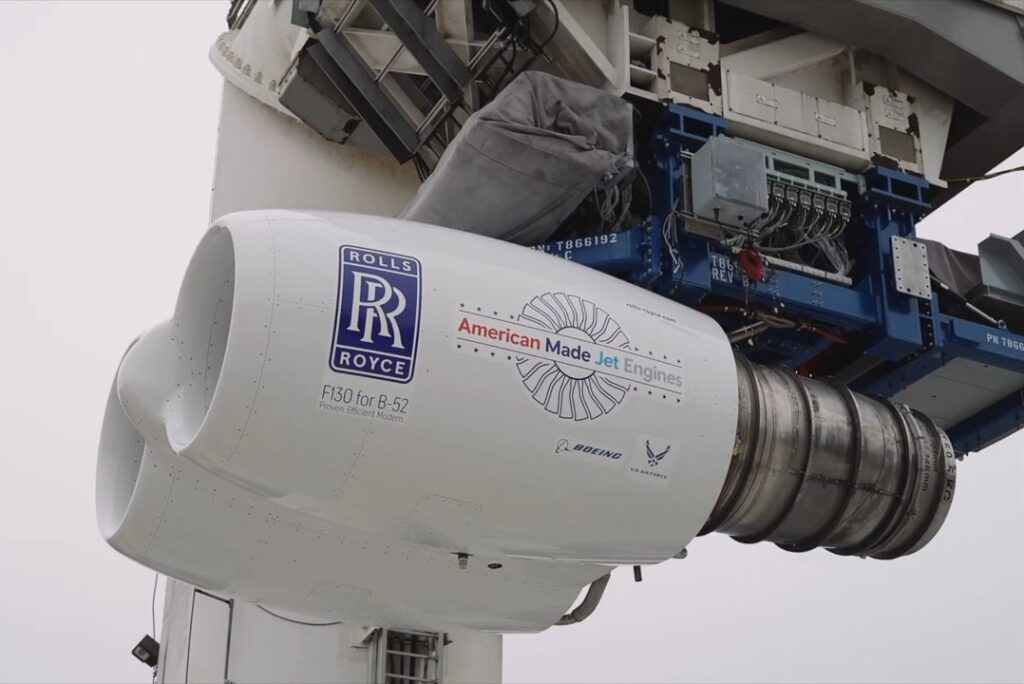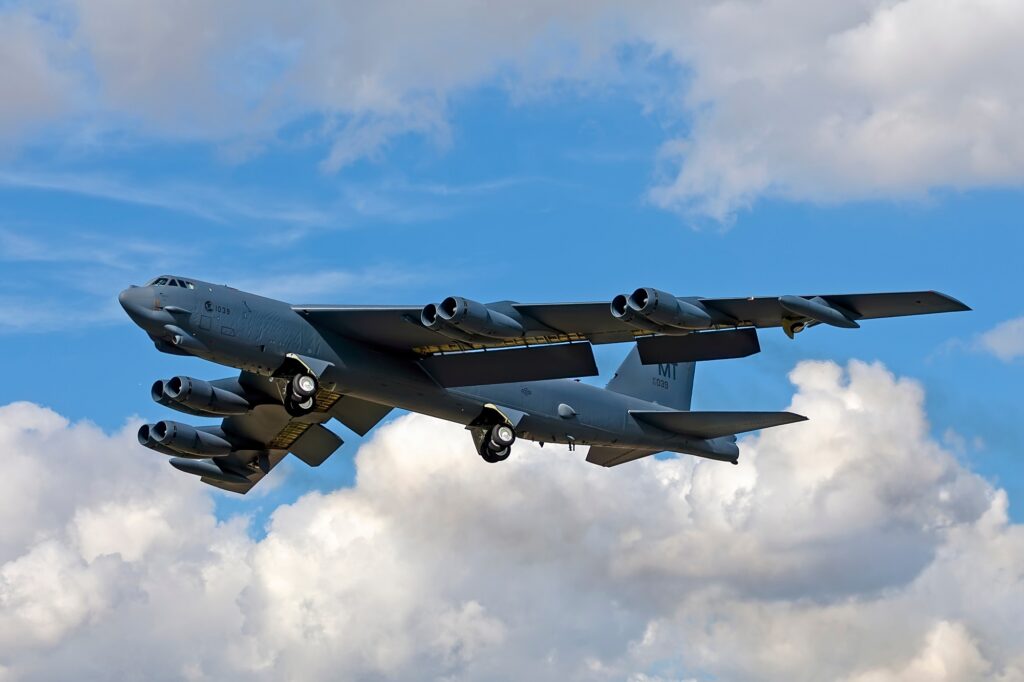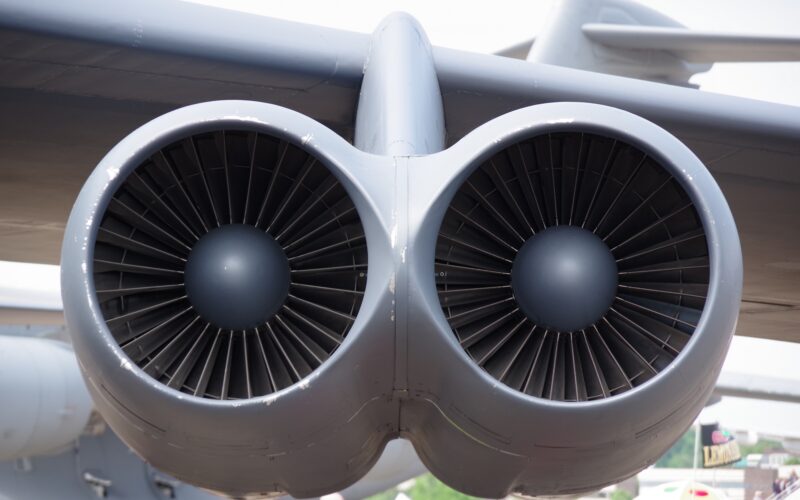Rolls-Royce has launched testing of the F130 engine, which is set to replace the current engines of the United States Air Force B-52 strategic bomber.
The testing is taking place at Rolls-Royce’s outdoor testing facility at the NASA Stennis Space Center in Mississippi, US. For the first time, two F130 engines were placed in the iconic B-52 dual-pod and tested together. Initial testing focused on crosswind aerodynamic flow.
“Early results from the testing have been very positive, with additional test data to be analyzed over the next several months,” Rolls-Royce said, adding that the successful operation of the engine’s digital controls system was confirmed.

The Rolls-Royce F130 engine was chosen to replace the Pratt & Whitney JT3D (also known as the TF33) currently powering the B-52H. These engines are based on the Rolls-Royce BR family of commercial engines for regional and corporate jets.
“We are excited to begin this milestone testing program, the first step for what will be decades of successful engine operation for the United States Air Force B-52 fleet,” Candice Bineyard, director of defense programs at Rolls-Royce, commented. “Rolls-Royce continues to work very closely with the Air Force and Boeing to ensure the engine testing and integration process run smoothly. This will result in higher fuel efficiency, reduced air refueling requirements, and significantly lower maintenance costs for the B-52 fleet. We look forward to sharing test results with the Air Force and Boeing as the test plan progresses at the NASA Stennis Space Center.”
Rolls-Royce expects that the F130 will remain the engine of choice for the remainder of the B-52’s service life. F130 engines are due to be manufactured, assembled, and tested at the Rolls-Royce Corporation facility in Indianapolis, the company’s largest production plant in the US.
B-52 Stratofortress’ modernization effort

The B-52 Stratofortress fleet is undergoing a modernization project called the Commercial Engine Replacement Program (CERP). Along with the engine change, Honeywell will provide a new auxiliary power unit (APU), forgoing the need for explosive gunpowder cartridges to quick-start the engines. L3Harris will upgrade the electronic warfare and radar system of the aircraft.
The Boeing B-52 Stratofortress is a long-range strategic bomber aircraft that entered service in 1955. The aircraft can carry weapon payloads of up to 70,000 pounds (32,000 kilograms) of either nuclear or precision-guided conventional ordnance, with an operating range of over 8,800 miles (14,080 kilometers).
The USAF currently operates 58 B-52H bombers in its fleet, assigned to the 5th Bomb Wing, the 2nd Bomb Wing, and the Air Force Reserve 307th Bomb Wing. The USAF expects to operate B-52s through 2050.

